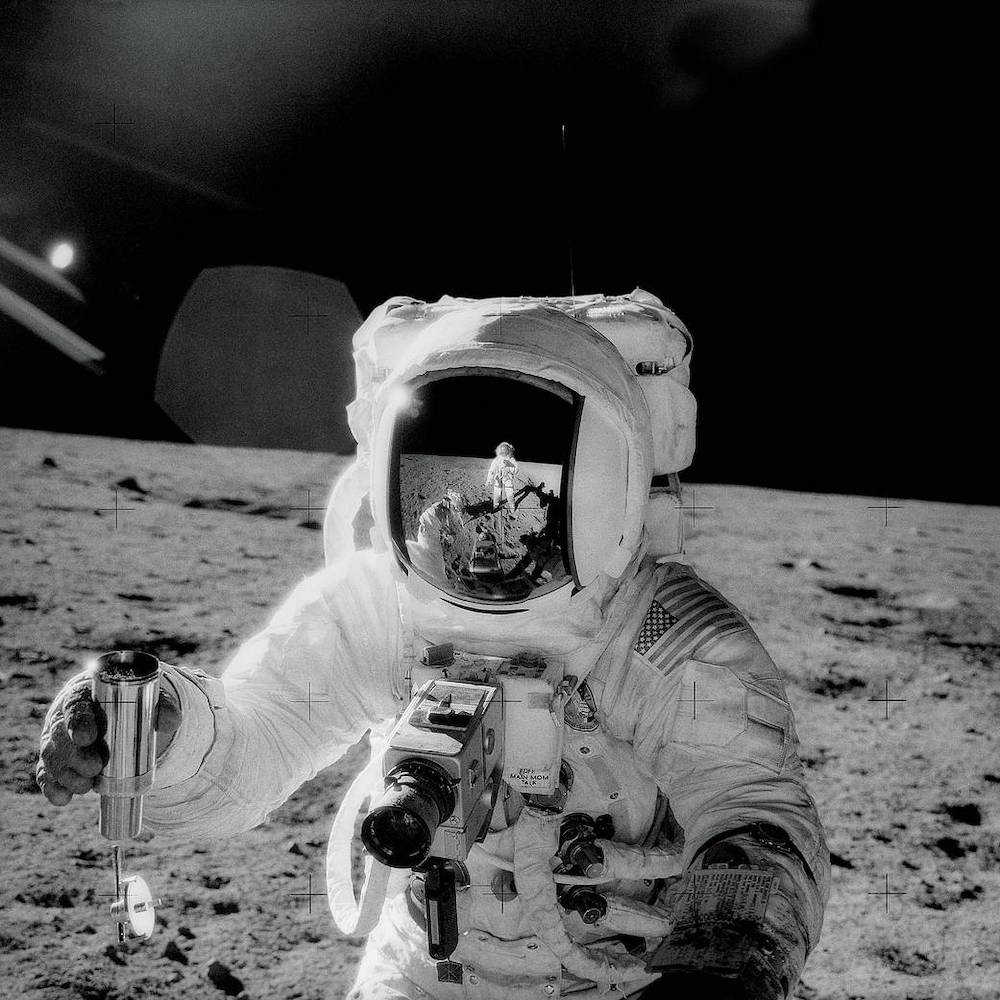Create a free profile to get unlimited access to exclusive videos, sweepstakes, and more!
Frozen carbon dioxide on the Moon could mean really cool future missions
Lunar “cold traps” that might contain frozen carbon dioxide could supply on-site rocket fuel and more.

Even with NASA delaying the first crewed Artemis landing by another year, there still isn’t much time to figure out the spacesuits, never mind whether the Moon has enough resources.
Any off-planet mission needs the lightest payload possible — and finding anything there that can sustain a human presence for an extended period of time will cancel out the need to haul it from Earth. The problem is whether something suspected to exist actually exists to begin with. “Cold traps” of carbon dioxide had previously been thought to be hiding in the Moon’s shadows. Turns out they actually are, and they could contain CO2 to fuel a mission.
Researcher Norbert Schorghofer and his colleagues have finally broken through a barrier and proven that there really are lunar cold traps out there. Whether or not they actually contain frozen CO2 is still uncertain, but if they do, it could be used for everything from rocket fuel to energy for supporting human infrastructures. Schorghofer led a study recently published in Geophysical Research Letters.
“We were able to prove there are CO2 cold traps by considering the full time dependence of the surface temperature,” he told SYFY WIRE. “Peak temperatures last only for a short time during the eclipse year, so using only the peak temperature is too pessimistic of an assessment.”
The eclipse year is how long it takes for the Sun (at least as we see it from Earth) to complete an entire revolution in relation to where the lunar orbit runs into Earth’s ecliptic, or the plane of our planet’s solar orbit. Eclipses occur whenever the Moon crosses that. The overall lunar surface temperature has helped improve the way scientists find cold traps. Until now, it had been notoriously difficult to prove there were any because the lowest temperatures possible on the surface are needed to freeze CO2, and measuring extremes can be tricky.
What was even more frustrating before was that only the highest temperatures at a given location were considered when trying to make out whether or not there could be a cold trap lurking there. If that maximum temperature was below about -355 Fahrenheit, it was assumed there was a cold trap there. The issue with this method is that it covered hardly any area. Another method that proved unreliable was computer models, because they weren’t being fed real data, and without that, they would underestimate how cold a cold trap needed to be.
“This may seem like a simple improvement in data analysis, but it meant we had to process a much bigger data set,” Schorghofer said. “Lunar soil only contains trace amounts of carbon, and frozen CO2 is important because carbon will be needed for many functions on a mission.”
Though the Moon is otherwise dead, a surprising amount of functions could be pulled off if you throw in carbon. Some SpaceX rocket engines use a fuel known as methalox. This fuel is made of methane (CH4) and liquid molecular oxygen (O2). You can extract the hydrogen from water ice, which we definitely know is on the Moon, and oxygen from lunar regolith, but the possibility of frozen carbon could mean producing mass quantities of rocket fuel right there.
Never mind that all food needs carbon. If your’e going to grow it, you have to give it life.
Lunar steel production and carbon fiber production are also possibilities being looked into by some companies. Steel is an alloy of iron and carbon that is strengthened by the added carbon. Some rocket parts are made of steel. Carbon fiber is strong enough to replace steel depending on what it is used for, and if it can be used for aircraft, it can possibly also be used for rockets. Biomaterial production is another thing carbon could be used for. If you’re going to build a habitat out of fungus, it’s going to need nutrients, and carbon is in those nutrients…you get it.
Volatile organics on the Moon — substances that contain carbon and evaporate quickly — like CO2 could also tell us more about the origins of the solar system.
“If we find CO2 ice, we also expect to find several other chemical species that are cold-trapped (H2O, SO2, NH3),” said Schorghofer. “The ratios of their abundances will tell as a great deal about whether they came from comets, meteoroids, volcanoes, or elsewhere.”
Next for Schorghofer’s team is proving there actually is frozen carbon dioxide in those cold traps. If there is, some really cool things could be possible when the first Artemis crew finally touches down.


























